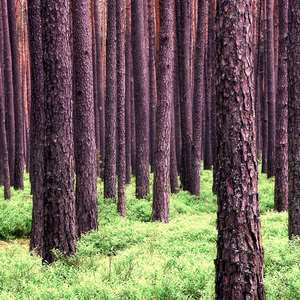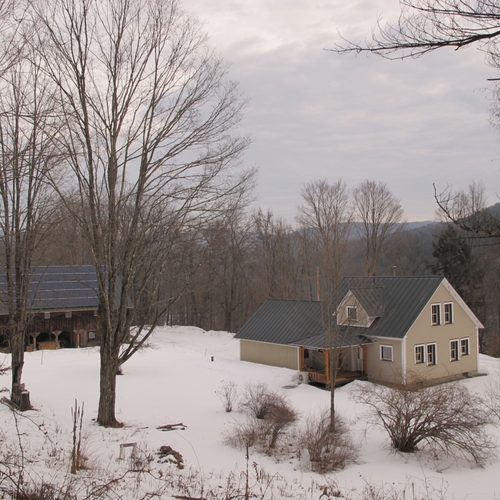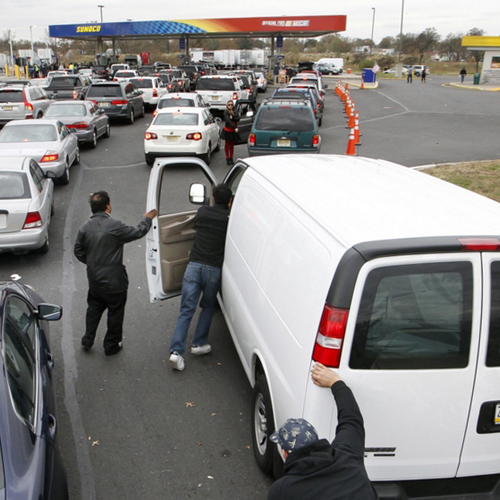
Image Credit: Simon Fraser University Public Affairs via Wikimedia Commons
This blog was originally posted by the Northeast Sustainable Energy Association as part of this year’s BuildingEnergy conference in Boston. Robert Leaver has over 38 years of experience as a convener and facilitator. He will speak at sessions on March 4 and again on March 5.
“May we live in interesting times,” goes the ancient Chinese saying, conveying both a blessing and a warning. In the face of extreme weather conditions — unusual and repetitive water, heat, and wind events — and severe depletions of natural resources, the landscape that NESEA practitioners face differs greatly from that of our predecessors. In these interesting times we think we know what to do — make tighter buildings — but in reality we must begin to address much larger issues in the resilience of the communities around our buildings.
At the BuildingEnergy conferences in 2013 and 2014, I served as a co-chair for the Resilient Cities track. This article was inspired by those rich conversations, which made it clear that sustainability thinking and practice will not be enough to make our communities thrive.
We must move beyond sustainability and embrace resiliency.
Resiliency means not just rebuilding, but learning from disaster to create a better future. One disaster prepares a community for others. As the community leaders of Newtown, Connecticut, said: “Without the experience of the previous hurricane and snowstorm, the town would not have come through, with resilience, the shootings at the Sandy Hook elementary school.” What the town learned from severe weather, it was able to apply to an entirely different sort of tragedy. It was, in a word, resilient.
Unfolding
Making energy-efficient buildings — even net-zero energy ones — will not maintain our communities in the face of a radically different adverse conditions. Going forward, we must think and practice beyond the building by using whole-systems thinking to build resilient communities.
“Unfolding,” a core idea of architect Christopher Alexander’s thinking, will serve as a useful guide to this discussion.(1)
Unfolding occurs when one walks the land to discern what the land wants built. This process meanders and is nonlinear. It takes time. We can see ourselves as being in the same unfolding process with the shift from sustainability to resilience. We must observe and sit with the earth and the concept of resilience so we can determine what to do next.
Sustainability has served as the NESEA mantra for many decades. I believe it is time to envision a new, more holistic mission. Sustainability is about limiting adverse impacts of people on the the planet through reduction of our natural resource use. By contrast, as C.S. Hollings said, “Resilience is a way of conceptualizing the ability to change and adapt. The best resilient systems don’t just bend and snap back. They get stronger because of stress. They learn.”
We think most often about resilience in terms of our response to natural disasters. Andrew Zolli describes resilience as the product of the response of various professions. For the emergency responder, the focus is getting people safe and critical systems back up. The psychologist helps people deal with trauma. Businesses install redundant systems so the doors stay open for customers.
Although their specific responses differ, these three professions — emergency responder, psychologist, and business person — employ a common approach. They adapt, aim to foster continuity, and learn from adversity. Resilience does not mean a community returns to its original state. Both people and systems must anticipate what to change so the community might better withstand future shocks.
Four moves toward resilience
We can explore our move toward resilience in four areas: community, buildings, infrastructure, and the “soul of the world.”
Already part of our practice, the areas of buildings and infrastructure will come easily to NESEA members. Fostering community and soul, although harder goals to grasp, are vital for improving the human condition. These two areas are discussed in depth below, as they are the least familiar to most of us and arguably the most important to understand.
Resilient communities
Research demonstrates that communities with tighter ties among people — regardless of age, sex, race, or class — survive threats of extreme weather, heat, or flooding better than those with loose ties.
We must create people and neighborhoods that can survive and even thrive after a disaster. Yes, the buildings must be resilient, but so must the people living in and around them. As designers, we must keep asking: Where are the areas of public community refuge?
Developing community resilience requires a network of local businesses that agree to stay open when disaster hits to provide for basic needs like food. We must develop an information infrastructure to disseminate this information.
Think about your neighborhood. In the face of a disaster, does the social fabric come together or tear apart? What is the community connectivity rating or altruism index? (This can be measured by the presence of community gathering places such as farmers’ markets, spiritual places, and bars.) The presence of known community resources tempers hostile resource wars in the face of scarcity.
Neighborhoods need known public places of community refuge that have the basic resources for survival, places where people know they can go in a disaster. Distribute lists of mobile phone numbers of people in your neighborhood. What is the walking score to reach the basic amenities of your place? If there is no gas for your car or transportation, where are the amenities you need that you can walk to?
After a disaster, members of a community are the brains for directing and organizing recovery and learning. The recovery effort has to be collaborative and consensus-based or we all suffer. Communities can identify the natural neighborhood conveners and organize them in advance. Build community resilience peer-to-peer, one person at a time.
In Connecticut, for example, volunteer Community Emergency Response Teams go house to house after a disaster to check on people’s well-being. Their work supports first responders and frees them for work requiring higher levels of training. In Boston, the Jamaica Plain New Economy Transition holds an emergency preparedness pie-eating party to inform community members about available resources.
Resilient buildings
We face a central question when it comes to the resiliency of our building stock: rebuild on or retreat from land hit by a natural disaster? Going forward, we must learn from building performance in natural disasters, then use that intelligence to determine where to build. We should not automatically rebuild what was there before, because the risks of the past are not the risks of the future. Instead of rebuilding, we ought to analyze the conditions to establish criteria for retreating or rebuilding.
Resilient infrastructure and systems
A resilient community must have flexible infrastructure, both for information and services. Smart phones, for example, can be used in emergency communication mode by disabling data downloads and camera use. This emergency approach maximizes the life of the phone and provides access over a longer period of time.
When designing, we can think about what utilities and resources are underground, and try to get them moved above ground. In an emergency situation with limited fuel and electricity, getting to underground utilities becomes very difficult. We should consider all hazards such as wind, heat, and flooding in both buildings and communities. How does a building operate? How does its landscaping interact with the forces of nature? We should look at the vulnerability of assets in the face of multiple hazards.
Resilient soul of the world
Soul is a slippery notion. It is murky, squishy, and even, at times, dark. One might say soul is what is underneath our culture: the underground, muddy, the underbelly. But soul holds up the culture; it keeps us unfolding in community. With soul comes intimacy and reflection.
Our experience of soul might occur as we walk on the street and stop in our tracks, arrested by the face of an elder or the patina of an old building. Soul does its work when it slows us down to experience another face or look at a parking meter. It is the continuous layering of memories, of our collective stories as well as our tales of rogues and community leaders.
Memories are honored in what was built at different times, for different purposes, and with different architectural styles. A building does not have to be classical or traditional to reveal soul. Soul is what is unknown, either longing to be revealed or to remain unknown, or what is unfinished, what is to come next in a place.
To experience soul, we must let go of our rational minds and drop into it. We can’t fully know the soul of a place through our head. To glimpse the richness of soul in a place, we must feel it. The soulful way is slowly attending to the particulars of a place: —that lamp post, this curb, that storefront—all arresting us in profound imagination.
The door into soul is not the mind, but aesthetics. Here we are, at the root of aesthetics, breathing in through our senses, noting an arresting image or experiencing the presence of another person on the street. The heart is opened, the body tingles—that is the aesthetic response. Beauty is present.
Soul reveals beauty, which is what must be present in a neighborhood for us to bond with the place and each other. Resilience requires these tight bonds. And without a deep sense of soul, community resilience is a fleeting potential.
Coda
As practitioners and thinkers we have much to learn about resilience of communities, buildings, the infrastructure, and the soul of the world. It will be a whole system in action. We are in for bigger and bigger shocks. Right now we need less science and a bit more art until the science beyond building science is better known. And even as we evolve the science, art and aesthetics must be present shaping our places.
Weekly Newsletter
Get building science and energy efficiency advice, plus special offers, in your inbox.















7 Comments
Great intro
And I hope it spurs a few last minute registrations to NESEA's Building Energy 15 conference. Having attended many conferences over many years, I can say with confidence that this is really the place to be if you're interested in the built environment.
I always wonder... why choose
I always wonder... why choose to live in a much more dangerous locale? Personal choices to lesson risk which is a form of resiliency is what comes to mind for me anyway... when others are flooded, hit with hurricanes, tornadoes, crime, power outages, polar bear attacks, and lions and tigers and bears oh my...
I chose to live on high ground, where power rarely goes out though just a few hundred yards down the road the power goes out often as the grid resiliency can change dramatically very locally. The bears seem to be nice bears and hard to find here... same with lions and tigers... had a close encounter with a bear in densely housed NJ though... way too close for my comfort, almost was walked into by a bears nightly cruise down his stream at dusk.
I like visiting less resilient communities... but why choose such? I know, why not, life is full of risk taking. It's a choice like my aerobatic flying and scuba diving adventures... just not mine. Happy to live way above any flood plane with plenty of fresh water, and trees to burn for heat.
Unfolding and Soul
I understand bits of this and other parts elude me. Unfolding and Soul are interesting if wooly concepts that I struggle to fit into the discussion on resilience. Going through architecture school on the West Coast in the early 80s I was exposed to the "what does the land want built?" and Louis Kahn's "what does the brick want to be?" questions. Perhaps it's my fault, but some thirty years later I've yet to get any satisfactory answer to them.
"what does the land want built?"
This is also the central question of permaculture design. Permaculture is usually identified with a body of design techniques - though they were original developed for large-scale agricultural system design, these techniques apply also to home-scale gardens, to buildings, and to communities. However, before the techniques are applied, there is this essential question. What does the land want?
It's a profoundly important question to ask, because it puts - finally - the needs of people and the needs of the land on equal footing. It challenges the designer to find a solution which meets the needs of both constituents without critically compromising service to either one. Insofar as that mindset prevails, I believe that asking this question is the first, most important, and arguably THE one essential key to sustainable and resilient design.
It's not an easy question to answer. The land speaks, but softly and not definitively. There are rarely bright lines (although there are a few: the land NEVER wants you to underground a living stream, for example). In my experience, the only way to learn to hear the land is to spend time walking it, preferably in the company of an experienced naturalist or permaculture designer.
I'll take this opportunity to plug the program that first taught me to do this: the Permaculture Design Certificate program at the Occidental Arts and Ecology Center in California.
http://oaec.org/our-work/projects-and-partnerships/permaculture/
It's a two-week residential intensive course, with a mixture of classroom instruction, land walking, and design exercises. It was the most important and most fun part of my education as a designer, period full stop. Highly, highly recommended.
Note that there are PDC courses throughout the country, including weekend and correspondence courses. OAEC just happens to be the one that I know. I'm sure others are just as good. But I do advise, if at all possible, to take a residential intensive. Being in that mental space for a good solid two weeks changes how you think, and that's the most important thing these courses have to offer.
Anthropocentric nonsense
Brent,
Sorry -- I'm a skeptic. Sit on the land in a lotus position for a year if you like, but you won't be able to figure out "what the land wants" -- other than the obvious fact that the land probably wants humans to go away.
If the aspiring young architect rises from the lotus position, and declares that he possesses a certain knowledge of "what the land wants," you can be sure that the architect -- not the land -- is about to speak.
listening to the land
Yes, well, if it's an architect then you are probably right. :)
And if someone claims to know what the land wants after just sitting there, then yes they are full of it. This requires walking the land, ideally at multiple times of year.
I am not talking woo-woo here. There are basic things that one should notice, attend to, and respect when considering what to do with a piece of land. Note the prevailing wind, the seasonal solar patterns relative to contemplated buildings, locations of wetlands (including seasonal ones) and floodplains. This is not rocket science, it's really just about basic ecology and having some respect for living systems. But it is also not something that engineers or architects are trained to do (any more) nor is it something that most clients would ever consider.
I do disagree that what the land wants in all cases is for the people to go away. Certainly there are times when that is the correct answer (e.g. wetlands, riparian zones, endangered species habitat). But equally often, and especially with hard-used/abused land, the local ecology can benefit from intelligent interventions which also serve the needs of people. For example, rapid rotation intensive cattle grazing can restore damaged land by helping to build topsoil. And consider the case of California: we now understand that what the missionaries and later the settlers found in California was not in fact a "wild" state at all, but a very long term, large scale gardening project by which the natives enhanced the productivity of the land to meet their needs. Along the way, they created an extremely healthy, bioactive ecosystem (which is only now starting to seriously fail, after two centuries of neglect and mismanagement). Their methods were based in part on the use of fire, and they were doing it for so long that many species co-evolved to require burning in order to propagate.
In any case, I think we are well past the point where responsible environmentalists can adopt a "hands off is best" attitude. We've done too much damage to too many parts of the ecosystem in too many places for that to be a good idea. (Yes, the land will recover on its own. But not if it continues to be used carelessly, and not within a human-relevant timescale in any case.) We have, for better or worse, become the stewards of the planet - out of necessity created by our own past (and current) carelessness. We can do a better or worse job of it, but we cannot hope to avoid the question.
One more thing
If my suggestions for "listening to the land" sound so basic as to be absurd or trivial... Well, yes, I actually agree. This should be very obvious and part of every practitioner's toolkit. I strongly suspect (with at least some actual evidence) that before the advent of modern materials and air conditioning, it was.
However, my professional experience tells me that these simple and obvious ideas are far from common. I have worked on more than one "green" building for which the architect did not know the actual direction of south. There was a "plan north" designation which was based on the local street grid, so it was within 45 degrees - and that was the extent of the architect's awareness of the site in relation to the most basic influence on all buildings, the sun.
The first time I encountered this, I was shocked. Now I have come to realize that this is by far the most common situation. (Maybe it's better in residential green building? I honestly don't know, but I kind of doubt it.) And so basic, elementary ideas have to be reintroduced as if they were radical concepts - because, relative to the current state of design practice, they are.
Log in or create an account to post a comment.
Sign up Log in